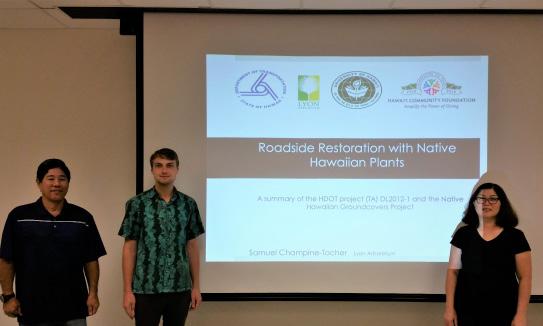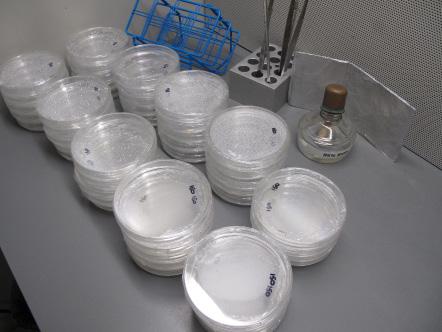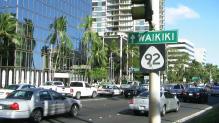
3 minute read
Highways
Roadside Restoration with Native Ferns

Researchers at the University of Hawaiʻi Harold L. Lyon Arboretum recently wrapped up a five-year project funded by the Hawaiʻi DOT; investigating the use of native Hawaiian ferns in roadside plantings on the island of Oʻahu.
By: Casey Abe
slopes of the Koʻolaus, or as kupukupu begins to germinate from spores that have landed perfectly into the cracks of a lava field on the Big Island of Hawaiʻi.
Tissue culture production
This process starts the creation of a forest by building and stabilizing the soil, developing a habitat for more native species and securing the watershed.
Ferns are a hopeful prospect in the restoration of urban areas utilizing these same strategies to colonize areas disturbed by construction.
Ferns were propagated at the Lyon Arboretum Hawaiʻi Rare Plant Program tissue culture laboratory and the Magoon Research Facility. Test sites were established at the Shidler College of Business and along the H-1 Westbound Waialae on-ramp.
The project involved several common native fern species, including palapalai (Microlepia strigosa), uluhe (Dicranopteris linearis), palaʻā (Odontosoria chinensis), and two species of native sword fern: kupukupu (Nephrolepis cordifolia) and ʻokupukupu (Nephrolepis exaltata subs. hawaiiensis).
These species were selected for their specific attributes such as erosion control, accessibility, propagation requirements, and beautification.
Horticulture technologies such as tissue culture and hydromulching were tested as a means to vastly increase the production and distribution of these ferns.
In the unique ecosystems of the Hawaiian Islands, the benefits of native ferns are numerous. As first succession species, native ferns are the first colonizers of a new terrain. Exotic species within the sites were removed after which hydromulch and hydro-capping techniques were tested as large scale planting applications.
This can be seen as uluhe creeps its rhizomes into fresh earth after a landslide in the steep The results of this research provide a road-map for the mass production of Hawaiʻi’s native fern species and insight into site restoration techniques, which will help the State reach its goal of 25% native plantings in urban areas by 2025.

Highways
DOT Receives New Highway Revenue Bonds
The Hawaii Department of Transportation (HDOT) is pleased to announce that it has successfully issued new highway revenue bonds that will provide funding to advance critical projects that will help preserve the State highway system and improve safety.
By: Tammy Lee
In addition, HDOT exercised fiscal prudence to refinance prior bonds for significant savings.
The new bonds will fund $100 million of key highway capital improvement projects that will enhance and improve Hawaii’s statewide system of highways, streets and roads. The bonds have an average interest rate of 2.82% with a final maturity in 2040.
HDOT also successfully refinanced $27 million of outstanding revenue bonds, reducing annual debt payments.
The bonds that were refinanced were originally issued in 2011 with an average interest rate of 4.89%. The new bonds have an average interest rate of 2.41%.
The refinancing will generate $4.5 million of savings for the Highways Division over the next 13 years.
“Today’s bond sale results are positive for the state and its people,” said Gov. David Ige. “The market continues to have strong confidence in Hawaii’s Highways Division and its ability to deliver crucial projects to improve our roads and enhance safety,” said Ige.
Prior to the bond sale, the Highways Division’s credit quality was reviewed by Moody’s Investors Service and S&P Global Ratings.
Moody’s upgraded the Division’s credit rating to Aa1 from Aa2 while S&P affirmed the Division’s rating of AA+.
The Moody’s upgrade brings the Division’s bond rating to within one notch of the highest possible rating of Aaa.
The improved credit rating and strong market conditions were instrumental in allowing the Highways Division to obtain a historically low interest rate on its bonds.









